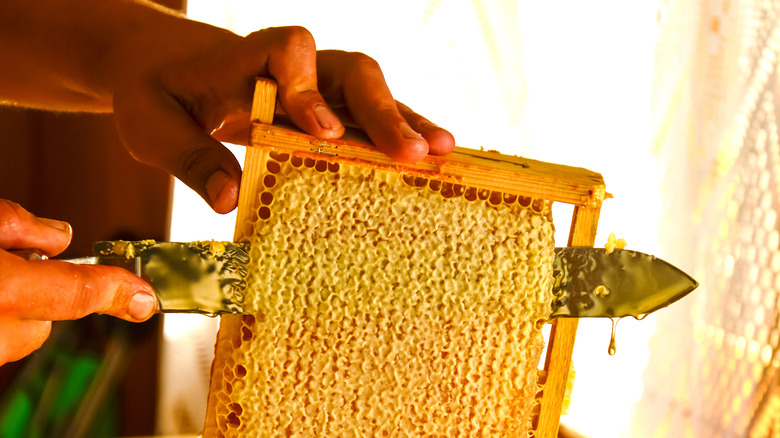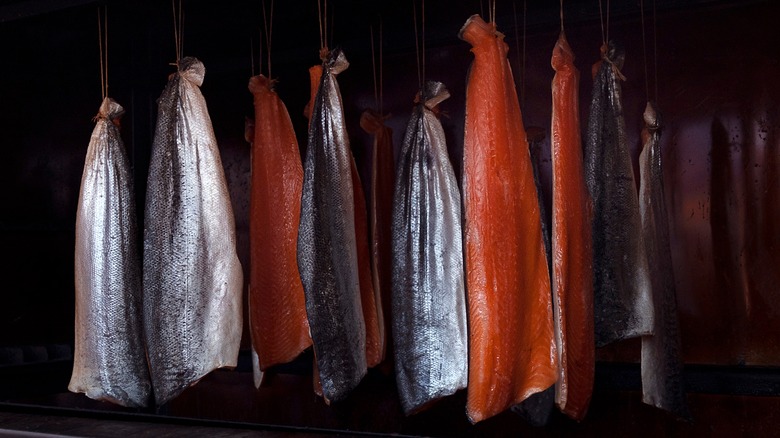How Beeswax Can Help You Cook Perfect Fish
Bees are rock stars. According to Greenpeace, these buzzing little workers give us a lot more than honey. They pollinate our food, predict bad weather, and can even help battle cancer. The honey, however, has to be a bee's most beloved product. It is a prized commodity throughout the world, being utilized across a variety of fields from medicine to the culinary arts. As food goes, honey pairs amazingly well with nuts, fruits, coffee, tea, vegetables, and an assortment of meat and fish, per Nates Nature Honey Co. But what about the wax? Can this byproduct of the honey-making process be incorporated into cooking?
It's common knowledge that beeswax is just as valuable as the honey it's attached to. Beeswax can be used in a multitude of different ways including to make candles, wax cheese, season cast iron, polish furniture, waterproof shoes, grease cookie sheets, naturally finish wood cutting boards and spoons, and make sweet little cannelés (via The Kitchn and Rural Sprout). It is important to note that beeswax is edible so it does not adversely affect anyone who consumes it. However, cooking with beeswax is an entirely different story altogether. Indeed, there are creative methods of using beeswax that lend themselves particularly well to fish.
Using beeswax to cook and age fish
There are a few different ways you can incorporate beeswax into your fish cooking repertoire. The first method comes to us courtesy of chef Heinz Reitbauer of Steirereck restaurant in Vienna, Austria. According to Fine Dining Lovers, Reitbauer cooks filets of freshwater char by covering them in molten beeswax and letting them sit for about fifteen minutes so the wax solidifies. The fish is then separated from the wax and served with assorted vegetables. Reitbauer says that beeswax not only gives the fish a floral flavor but acts almost as a coating of fat, which insulates the fish and keeps it from overcooking. The result is a moist, clean filet.
Another, more ancient method of merging beeswax and fish is the process of dry-aging. More common in the world of steak, dry-aging fish is a process that removes any excess moisture like blood and slime. The result is a much cleaner, more tender fish that's pleasurable to eat, per Food & Wine. Using beeswax in the dry-aging process creates a protective shell that keeps out light and moisture. This allows the fish to self-marinate in its own oils, as well as interact with the flavors in the beeswax. It's a technique Jacob Harth, chef, and owner of Erizo in Portland, Oregon, uses to help preserve his product year-round (via Eater).

